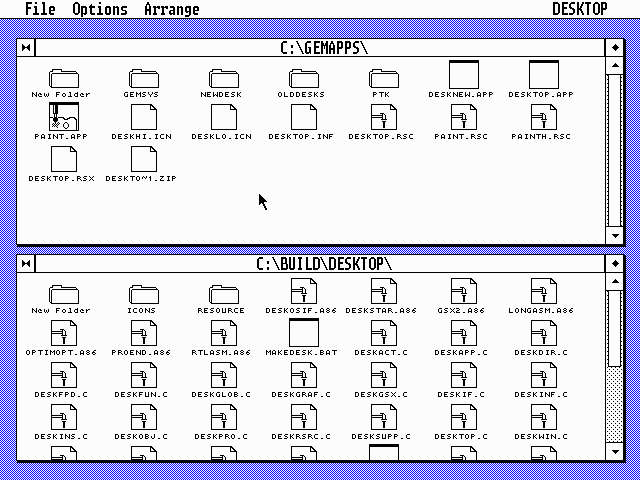| Gary Kildall - CP/M, Digital Research and GEM |
| Written by Harry Fairhead | |||||||
Page 3 of 3
GEM - A GUI For the PCDR even tried to outdo Microsoft with the first GUI for the PC, GEM.
GEM A Graphical Operating System That Was Way Ahead Of Windows - At First. This was an excellent system but again, once it was produced it remained static, then developed in fits and starts so that no one really knew what the current version was. In 1991 DR was taken over by Novell, primarily for Novell to gain access to the OS line of products. Tragic, Premature, DeathGary Kildall died after a blow to the head during a biker brawl at a bar in Monterey, aged 52, but the exact circumstances of the injury have never been entirely clear. His final business venture before his premature death in 1994 was to develop a home PBX system which integrated land-line telephones with mobile phones. He also appeared regularly on TV, co-hosting Computer Chronicles, and remained an authority on the computer business. I also suspect that he retained delight in programming and expensive technological toys, despite everything.
In 1995, the year after his untimely death, a special edition of Computer Chronicles was devoted to Gary Kildall's story. Introduced by Stewart Cheifet it includes comments by Tom Rolander who was the first employee of Digital Research; Alan Cooper, a CP/M applications developers; as well as Gordon Eubanks and others.
In 2014 an IEEE Milestone plaque was installed outside the former Digital Research headquarters at 801 Lighthouse Avenue, Pacific Grove, Californina to commemorate the 40th anniversary of the birth of CP/M in 1974. In order to convince IEEE that an achievement merits a Milestone award its proposers have to provide a justification in terms of its historical significance. Here is how CP/M's technological importance is summed up on its proposal: CP/M (Control Program for Microcomputers) was the first commercial operating system to allow a microprocessor-based computer to interface to a disk drive storage unit. CP/M played an important role in stimulating the hobbyist personal computer movement of the 1970s. Its ability to support software programs on a wide variety of hardware configurations enabled early use of microcomputer systems from many different manufacturers in business and scientific applications. Microsoft DOS, as licensed to IBM for the original PC, was written to emulate the "look and feel" of CP/M. Thus CP/M was the forerunner of the operating systems that now power the majority of the world’s computers and led to the personal computing revolution. More InformationRelated ArticlesIEEE Honors Gary Kildall With Plaque Software From The 80s Running In Your Browser The SWTP Effect - How The Microcomputer Revolution Started In The UK The UK 1970s Big Board Computers 30th Anniversary of the First Portable Computer 30 years ago - Microsoft signs contract with IBM to create MS-DOS
To be informed about new articles on I Programmer, sign up for our weekly newsletter, subscribe to the RSS feed and follow us on Twitter, Facebook or Linkedin.
<ASIN:0465029906>
|
|||||||
| Last Updated ( Friday, 26 April 2024 ) |


